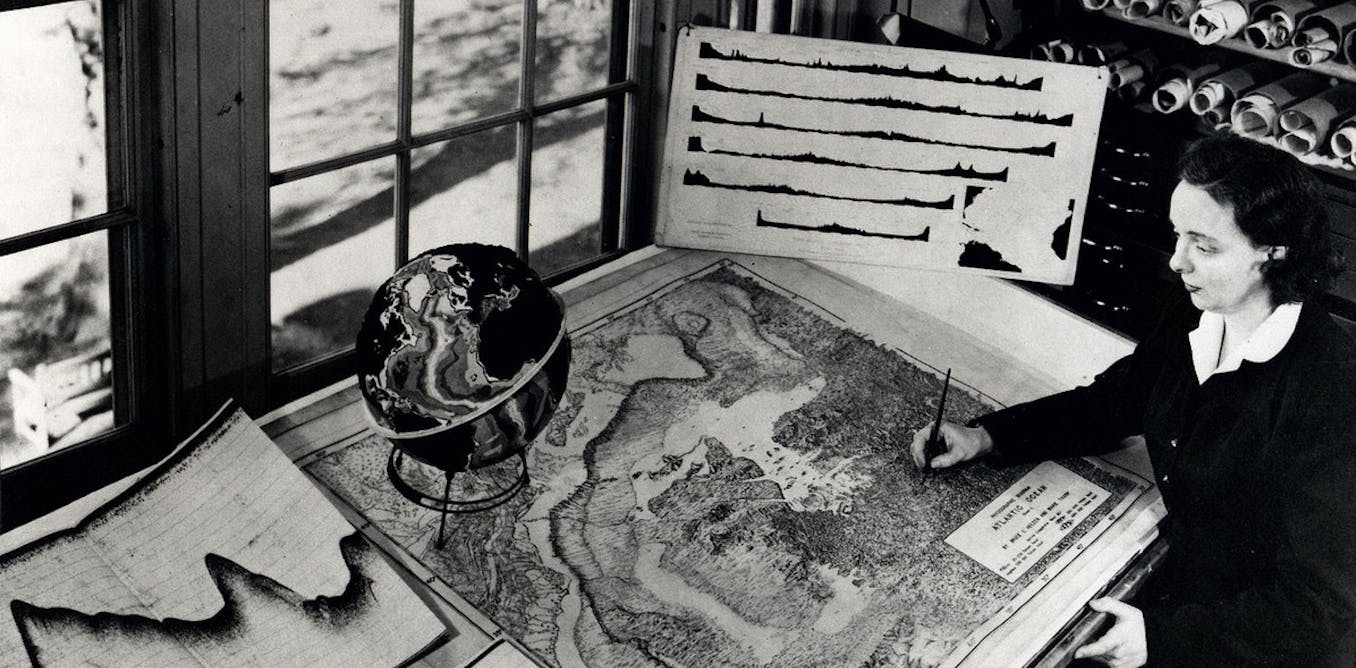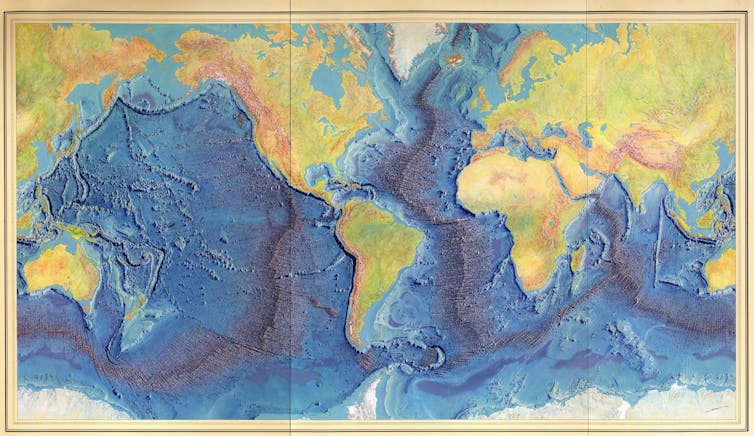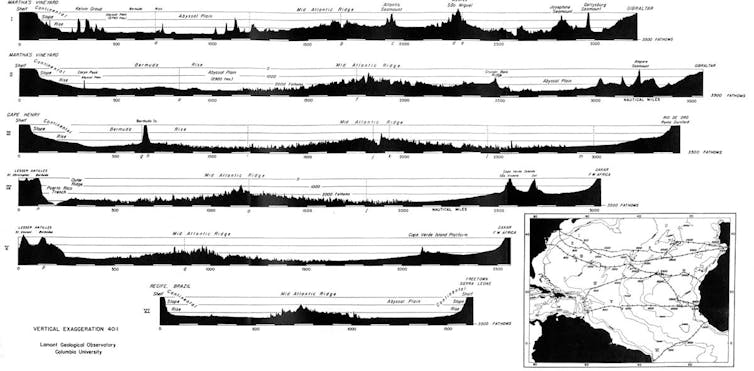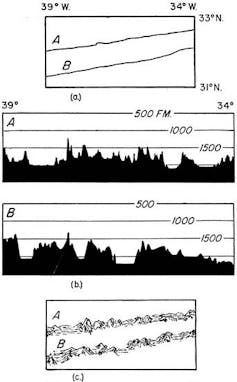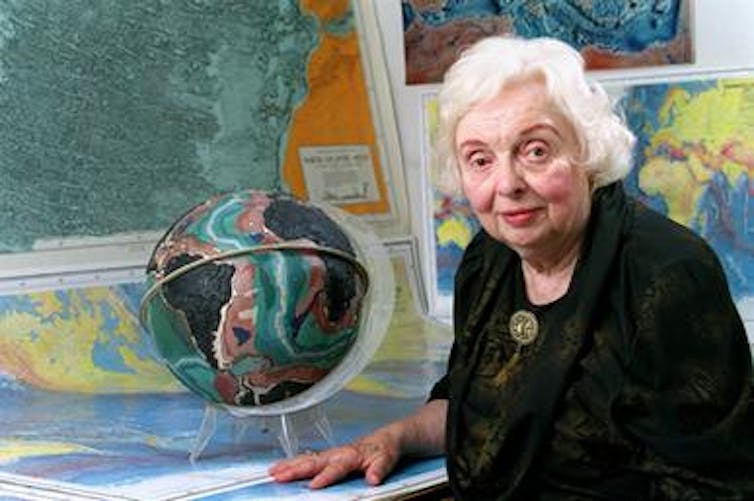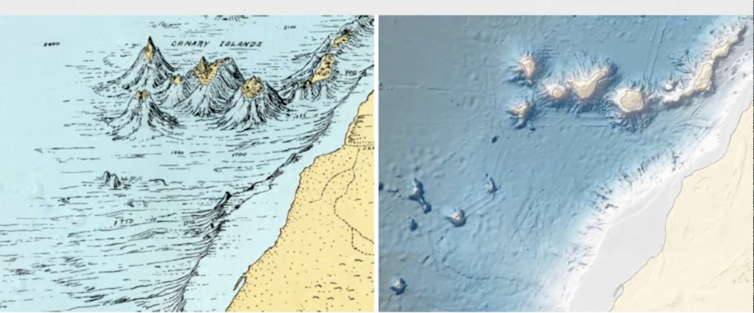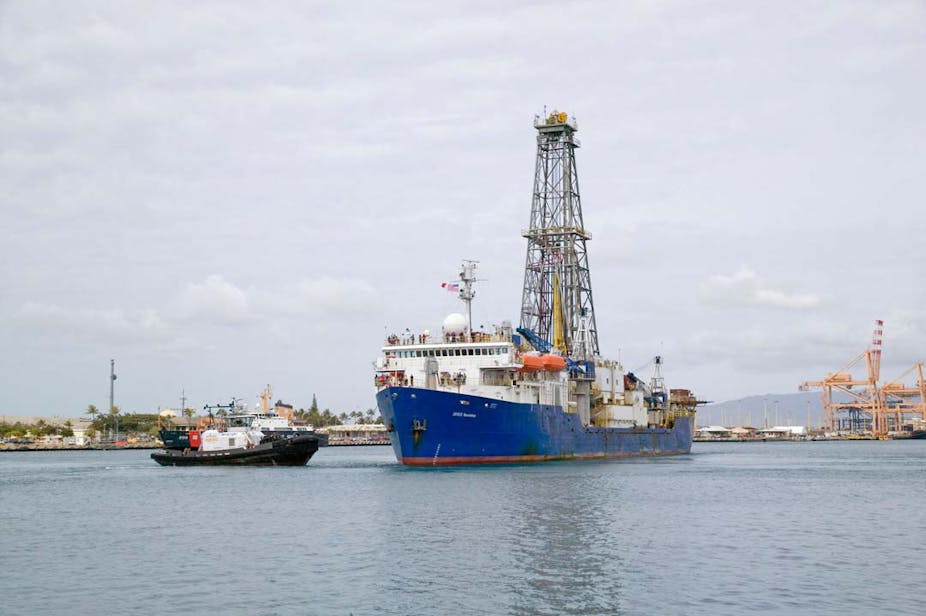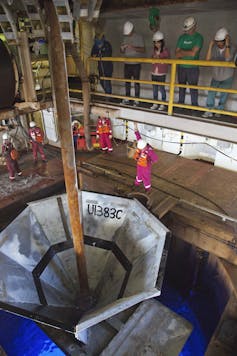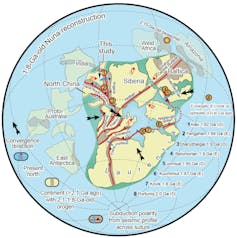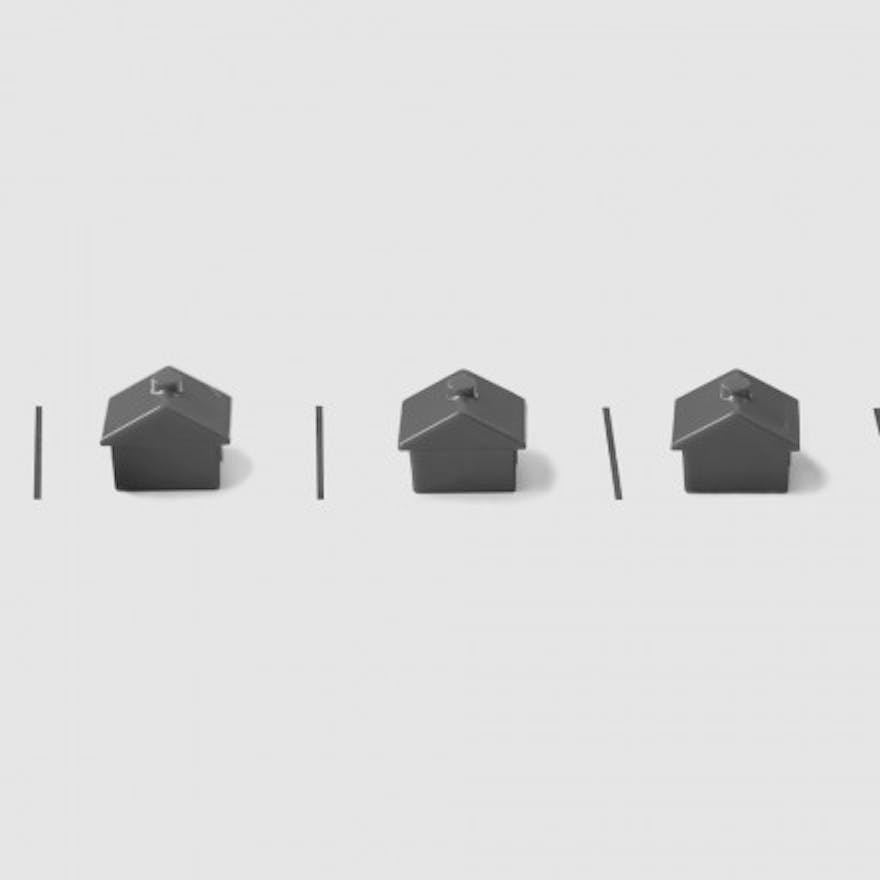SUPERSPREADER EVENT NINE DAYS OF DRUNK BIKERS NO MASKS
Harleys everywhere, masks nowhere: Sturgis draws thousands
Harleys everywhere, masks nowhere: Sturgis draws thousands
NOT JUST HELLS ANGELS
AMERICAN BIKERS R A DEATH CULT
NOT JUST THEIR REFUSAL TO WEAR HELMETS
“Screw COVID,” read the design on one T-shirt being hawked. “I went to Sturgis.”
Stephen Groves, Associated Press , Friday, August 7, 2020

Photo: Stephen Groves, AP
Thousands of bikers rode through the streets for the opening day of the 80th annual Sturgis Motorcycle rally Friday, Aug. 7, 2020, in Sturgis, S.D.
STURGIS, S.D. (AP) — Thousands of bikers poured into the small South Dakota city of Sturgis on Friday as the 80th Sturgis Motorcycle Rally rumbled to life despite fears it could lead to a massive coronavirus outbreak.
The rally could become one of the largest public gatherings since the pandemic began, with organizers expecting 250,000 people from all over the country to make their way through Sturgis during the 10-day event. That would be roughly half the number of previous years, but local residents — and a few bikers — worry that the crowds could create a “super-spreader” event.
Many who rode their bikes into Sturgis on Friday expressed defiance at the rules and restrictions that have marked life in many locales during the pandemic. People rode from across the country to a state that offered a reprieve from coronavirus restrictions, as South Dakota has no special limits on indoor crowds, no mask mandates and a governor who is eager to welcome visitors and the money they bring.

“Screw COVID,” read the design on one T-shirt being hawked. “I went to Sturgis.”
Bikers rumbled past hundreds of tents filled with motorcycle gear, T-shirts and food. Harley Davidson motorcycles were everywhere but masks were almost nowhere to be seen, with an Associated Press reporter counting fewer than 10 in a crowd of thousands over a period of several hours.
For Stephen Sample, who rode his Harley from Arizona, the event was a break from the routine of the last several months, when he's been mostly homebound or wearing a mask when he went to work as a surveyor.
“I don’t want to die, but I don’t want to be cooped up all my life either,” he said.
Still, Sample, who is 66, feared what could happen if he caught COVID-19 at the rally. He said he was trying to avoid indoor bars and venues, where he felt the risk of infection was greater. But on the opening day of the rally, he said he ate breakfast at an indoor diner.
As Sample weighed the risks of navigating the crowds, the same thrill-seeking that attracted him to riding motorcycles seemed to win out.

Photo: Stephen Groves, AP
Thousands of bikers rode through the streets for the opening day of the 80th annual Sturgis Motorcycle rally Friday, Aug. 7, 2020, in Sturgis, S.D.
STURGIS, S.D. (AP) — Thousands of bikers poured into the small South Dakota city of Sturgis on Friday as the 80th Sturgis Motorcycle Rally rumbled to life despite fears it could lead to a massive coronavirus outbreak.
The rally could become one of the largest public gatherings since the pandemic began, with organizers expecting 250,000 people from all over the country to make their way through Sturgis during the 10-day event. That would be roughly half the number of previous years, but local residents — and a few bikers — worry that the crowds could create a “super-spreader” event.
Many who rode their bikes into Sturgis on Friday expressed defiance at the rules and restrictions that have marked life in many locales during the pandemic. People rode from across the country to a state that offered a reprieve from coronavirus restrictions, as South Dakota has no special limits on indoor crowds, no mask mandates and a governor who is eager to welcome visitors and the money they bring.

“Screw COVID,” read the design on one T-shirt being hawked. “I went to Sturgis.”
Bikers rumbled past hundreds of tents filled with motorcycle gear, T-shirts and food. Harley Davidson motorcycles were everywhere but masks were almost nowhere to be seen, with an Associated Press reporter counting fewer than 10 in a crowd of thousands over a period of several hours.
For Stephen Sample, who rode his Harley from Arizona, the event was a break from the routine of the last several months, when he's been mostly homebound or wearing a mask when he went to work as a surveyor.
“I don’t want to die, but I don’t want to be cooped up all my life either,” he said.
Still, Sample, who is 66, feared what could happen if he caught COVID-19 at the rally. He said he was trying to avoid indoor bars and venues, where he felt the risk of infection was greater. But on the opening day of the rally, he said he ate breakfast at an indoor diner.
As Sample weighed the risks of navigating the crowds, the same thrill-seeking that attracted him to riding motorcycles seemed to win out.

“I think we’re all willing to take a chance,” he said.
Republican Gov. Kristi Noem has taken a largely hands-off approach to the pandemic, avoiding a mask mandate and preaching personal responsibility. She supported holding the Sturgis rally, pointing out that no virus outbreak was documented from the several thousand people who turned out to see President Donald Trump and fireworks at Mount Rushmore last month.
Daily virus cases have been trending upward in South Dakota, but the 7-day average is still only around 84, with fewer than two deaths per day.
The rally attracted crowds of retirees and people in age ranges considered to be at higher risk from the coronavirus. But for many who see the rally as an annual pilgrimage, the camaraderie and atmosphere couldn’t be missed.
“I fell in love with the rally. I love the sound of the bikes,” said Bill Sudkamp, who was making his 20th consecutive rally appearance.
He and his wife, who declined to give their ages but said they were at elevated risk for COVID-19, were among the handful of people seen wearing masks in downtown Sturgis, a community of about 7,000 that's roughly 25 miles (40 kilometers) northwest of Rapid City. They were also planning to avoid bars. Sudkamp felt it was inevitable that infections would spread in the packed bars and concert venues.
“It looked like South Dakota was plateauing mostly,” Sudkamp said. “It will be interesting to see what it looks like in two weeks.”
Marsha Schmid, who owns the Side Hack Saloon in Sturgis, was trying to keep her bar and restaurant from becoming a virus hot spot by spacing out indoor tables and offering plenty of hand sanitizer. She also scaled back the number of bands hired for the rally, hoping the crowds would stay thin but still spend the cash that keeps her business viable for the rest of the year.
She pointed out that many of her employees depend on the rally and the tips they can make.
“You’ve got people coming from all over the world,” she said. “I just hope they are being responsible and if they don’t feel good, they stay away.”
Several locals said they would be spend the rally hunkered down at home. Carol Fellner stocked up on groceries and planned to stay away from any gatherings. Her husband suffers from bouts of pneumonia and kidney problems, and COVID-19 would be a “death sentence” for him, she said.
Fellner felt that the risk of an outbreak would be felt long after the bikers leave. The city plans to mass test residents to try to detect and halt outbreaks, but the area’s largest hospital system is already burdened with the influx of tourists and bikers who inevitably need hospital care during this time.
Sample was aware his trip to the rally could end in the hospital, which seemed to weigh on him.
“This is a major experiment,” he said. “It could be a major mistake.”
‘Screw COVID’: 250,000 Bikers to Defy Common Sense for Nine Days at Sturgis Rally
‘I AIN’T SCARED’
As the coronavirus rages around the nation, a quarter of a million motorcyclists are descending on Sturgis, South Dakota, where money seems to have trumped sense.
Michael Daly
Special Correspondent
Updated Aug. 07, 2020
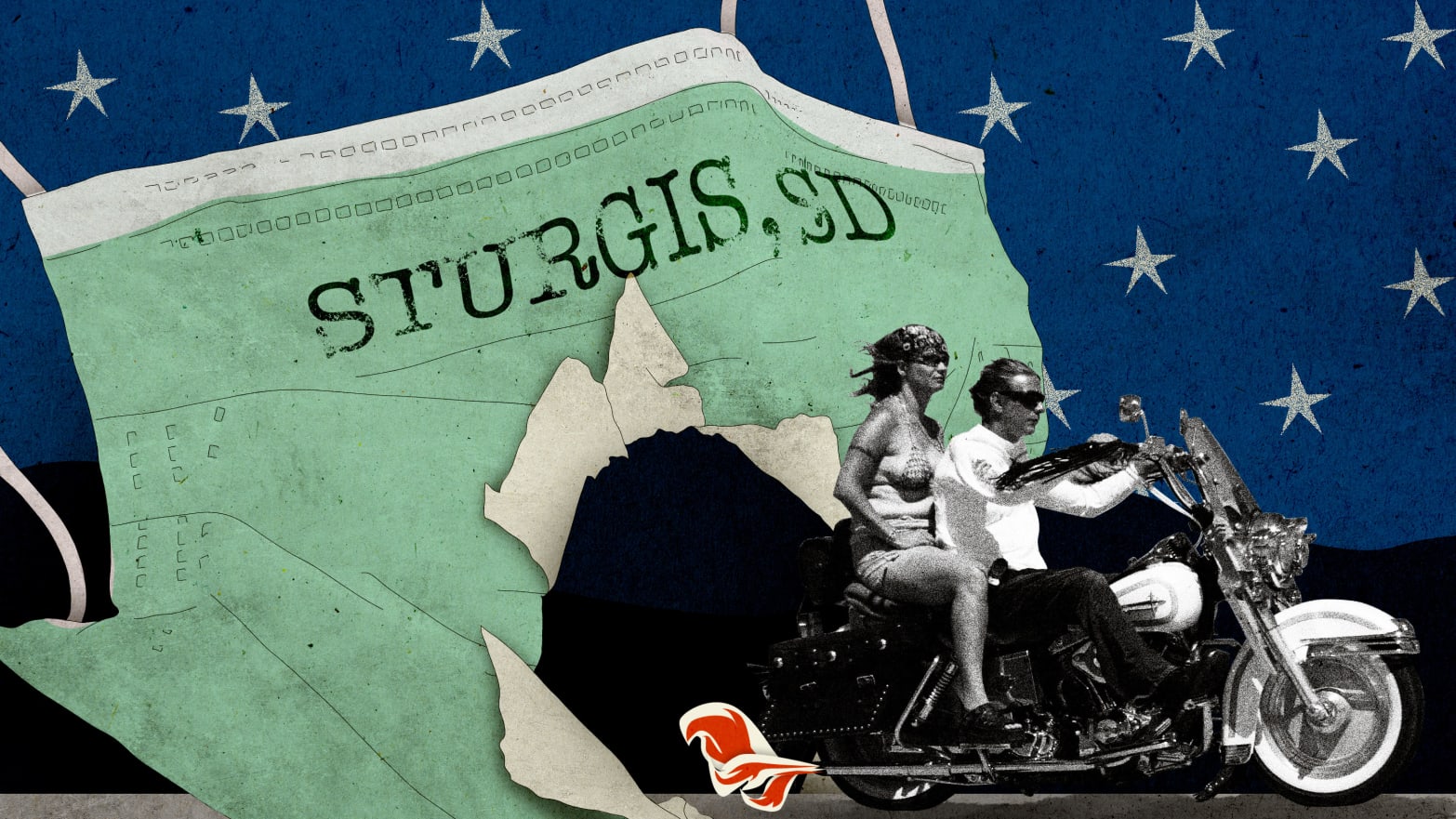
Photo Illustration by Elizabeth Brockway/The Daily Beast/Getty
Friday is the official start of the 80th annual Sturgis Motorcycle Rally, where 250,000 people are expected to gather in the South Dakota town of that name for nine days of defying proven precautions against the spread of COVID-19.
“Nobody is social distancing and none of them are wearing masks,” local psychologist Michael Fellner told The Daily Beast. “None.”
Fellner is originally from Brooklyn in New York City, which was once the nation’s COVID-19 epicenter but has just reported three straight days without a single death from the virus. The transformation is almost certainly the result of the same precautions the bikers in Sturgis are ignoring.
The Sturgis Rally’s own official website has a “COVID tracker” tab that links to the South Dakota Health Department site, where offerings include a risk assessment for public gatherings.
“Highest risk: Large, in-person gatherings where it is difficult for individuals to remain spaced at least 6 feet apart and attendees travel from multiple areas,” it advises.
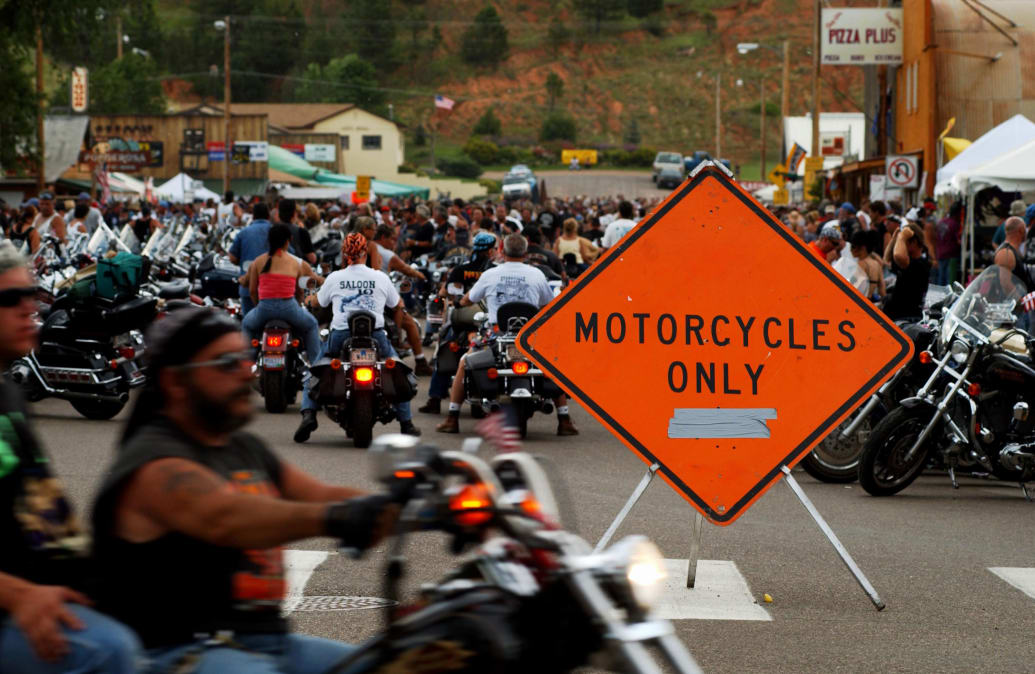
Only motorcycles are allowed into the center of tiny town of Hulett, WY which is overun by cyclists from the 61st annual Sturgis Motorcycle Rally, August 8, 2001, held in Sturgis, SD.
David McNew/Getty
As the rally’s Facebook page attests, the bikers come from across the country.
“Leaving from NH today. See ya soon!” posted Howard Saborn of New Hampshire.
“Coming for the 1st time on Saturday from Virginia,” Vickie Farmer announced.
“On our way now. Stopped in Missouri to sleep. Be there Thursday night,” Jesse Robison of Georgia posted.
“Be there Friday from San Angelo Tx.,” David Buckner said.
“On my way I ain’t scared of the media flue or as we call it round here election flue see ya soon sd,” J.F. Watson of Ohio said.
“Just call it a big protest !! And it be A-Ok!!” J. Toothman, also of Ohio, suggested.
Republican Gov. Kristi Noem has taken a largely hands-off approach to the pandemic, avoiding a mask mandate and preaching personal responsibility. She supported holding the Sturgis rally, pointing out that no virus outbreak was documented from the several thousand people who turned out to see President Donald Trump and fireworks at Mount Rushmore last month.
Daily virus cases have been trending upward in South Dakota, but the 7-day average is still only around 84, with fewer than two deaths per day.
The rally attracted crowds of retirees and people in age ranges considered to be at higher risk from the coronavirus. But for many who see the rally as an annual pilgrimage, the camaraderie and atmosphere couldn’t be missed.
“I fell in love with the rally. I love the sound of the bikes,” said Bill Sudkamp, who was making his 20th consecutive rally appearance.
He and his wife, who declined to give their ages but said they were at elevated risk for COVID-19, were among the handful of people seen wearing masks in downtown Sturgis, a community of about 7,000 that's roughly 25 miles (40 kilometers) northwest of Rapid City. They were also planning to avoid bars. Sudkamp felt it was inevitable that infections would spread in the packed bars and concert venues.
“It looked like South Dakota was plateauing mostly,” Sudkamp said. “It will be interesting to see what it looks like in two weeks.”
Marsha Schmid, who owns the Side Hack Saloon in Sturgis, was trying to keep her bar and restaurant from becoming a virus hot spot by spacing out indoor tables and offering plenty of hand sanitizer. She also scaled back the number of bands hired for the rally, hoping the crowds would stay thin but still spend the cash that keeps her business viable for the rest of the year.
She pointed out that many of her employees depend on the rally and the tips they can make.
“You’ve got people coming from all over the world,” she said. “I just hope they are being responsible and if they don’t feel good, they stay away.”
Several locals said they would be spend the rally hunkered down at home. Carol Fellner stocked up on groceries and planned to stay away from any gatherings. Her husband suffers from bouts of pneumonia and kidney problems, and COVID-19 would be a “death sentence” for him, she said.
Fellner felt that the risk of an outbreak would be felt long after the bikers leave. The city plans to mass test residents to try to detect and halt outbreaks, but the area’s largest hospital system is already burdened with the influx of tourists and bikers who inevitably need hospital care during this time.
Sample was aware his trip to the rally could end in the hospital, which seemed to weigh on him.
“This is a major experiment,” he said. “It could be a major mistake.”
‘Screw COVID’: 250,000 Bikers to Defy Common Sense for Nine Days at Sturgis Rally
‘I AIN’T SCARED’
As the coronavirus rages around the nation, a quarter of a million motorcyclists are descending on Sturgis, South Dakota, where money seems to have trumped sense.
Michael Daly
Special Correspondent
Updated Aug. 07, 2020

Photo Illustration by Elizabeth Brockway/The Daily Beast/Getty
Friday is the official start of the 80th annual Sturgis Motorcycle Rally, where 250,000 people are expected to gather in the South Dakota town of that name for nine days of defying proven precautions against the spread of COVID-19.
“Nobody is social distancing and none of them are wearing masks,” local psychologist Michael Fellner told The Daily Beast. “None.”
Fellner is originally from Brooklyn in New York City, which was once the nation’s COVID-19 epicenter but has just reported three straight days without a single death from the virus. The transformation is almost certainly the result of the same precautions the bikers in Sturgis are ignoring.
The Sturgis Rally’s own official website has a “COVID tracker” tab that links to the South Dakota Health Department site, where offerings include a risk assessment for public gatherings.
“Highest risk: Large, in-person gatherings where it is difficult for individuals to remain spaced at least 6 feet apart and attendees travel from multiple areas,” it advises.

Only motorcycles are allowed into the center of tiny town of Hulett, WY which is overun by cyclists from the 61st annual Sturgis Motorcycle Rally, August 8, 2001, held in Sturgis, SD.
David McNew/Getty
As the rally’s Facebook page attests, the bikers come from across the country.
“Leaving from NH today. See ya soon!” posted Howard Saborn of New Hampshire.
“Coming for the 1st time on Saturday from Virginia,” Vickie Farmer announced.
“On our way now. Stopped in Missouri to sleep. Be there Thursday night,” Jesse Robison of Georgia posted.
“Be there Friday from San Angelo Tx.,” David Buckner said.
“On my way I ain’t scared of the media flue or as we call it round here election flue see ya soon sd,” J.F. Watson of Ohio said.
“Just call it a big protest !! And it be A-Ok!!” J. Toothman, also of Ohio, suggested.
Rod Florquest of Wyoming was among the thousands who had arrived early.
“You really have to look to see someone wearing a mask,” he reported, as though this was a good thing.
And, having come from seemingly everywhere with whatever virus they might happen to carry, they will all mingle and return home with any virus they happen to pick up. Some will have purchased one of the souvenir T-shirts that retired school counselor Linda Chaplin of Sturgis saw a street vendor selling. The front reads:
“Screw COVID-19
I came to Sturgis”
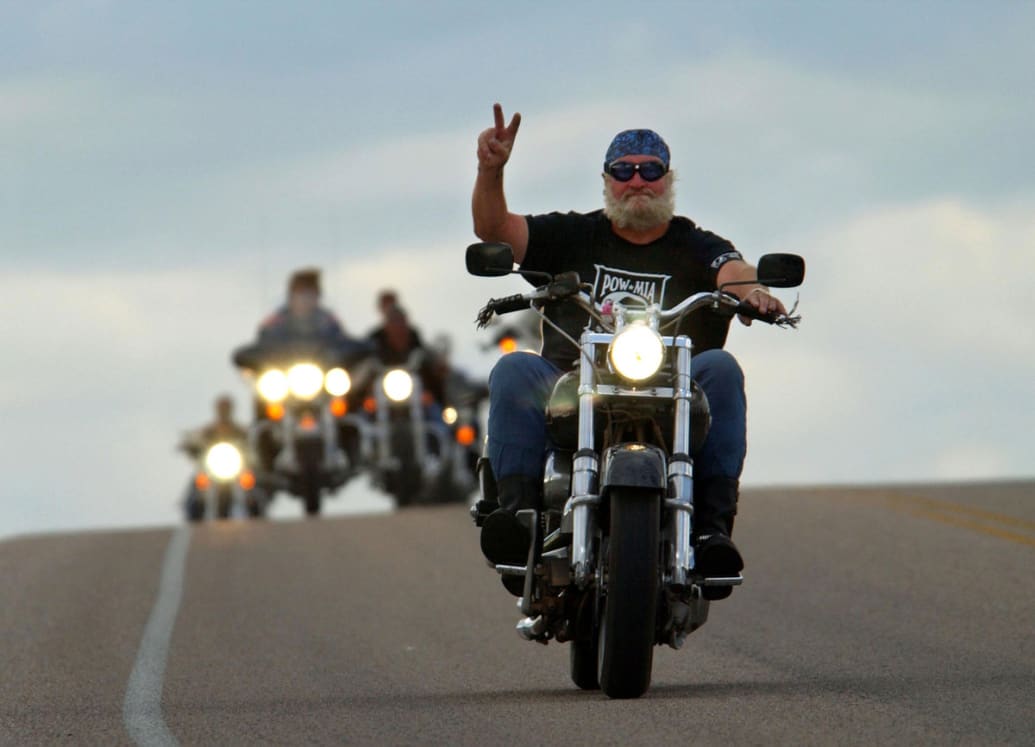
David McNew/Getty
That is far from what the 70-year-old Chaplin imagined when she initially learned of the pandemic.
“One of my first thoughts was, ‘Oh, we won’t have the rally this year,’” she told The Daily Beast.
She allows that she is “not a rally person,” having in the past hopped on a bicycle to negotiate the annual gridlock of Harleys. But she understands the economic importance of the event to the town, having in past years picked up some extra money sewing patches on jackets. She nonetheless did not expect her town to prize livelihoods over lives.
“I was rather aghast that our little town was still planning to go ahead with the rally,” she said.
Chaplin was among the citizens who addressed Mayor Mark Carstensen and the City Council at a June 10 hearing about the rally. Chaplin was not speaking to strangers. She used to change the mayor’s diapers when he was a toddler and childhood friend of her daughter.
“It is my deepest conviction that this is a huge, foolish mistake to make to host the rally this year," Chaplin said at the hearing. “The government of Sturgis needs to care most for its citizens.”
She offered a solution to the rally problem: “Have a bigger one next year.”
Other speakers included ICU nurse Linda Janovy, who said the regional medical facilities are not equipped to handle an outbreak.
“We have freedom, but we also have responsibility,” she said. “You are not going to make everybody happy. Your responsibility is to keep the public safe, as safe as you can.”
Then came Lynn Burke, a nurse at the local VA facility.
“What’s the price of human life?” she asked. “I hear a lot of people saying we’re going to lose money. What about the lives we’re going to lose?”
But several local business people spoke of how dependent they are on the revenue generated by the rally. And there were also folks such as a lifelong Sturgis resident named Bob Davis.
“Freedom, God, and Donald Trump,” he said.
The City Council had never considered whether or not to approve the rally because that had never been a question. There had only been the formality of approving the necessary road closures. The council did so again on June 15 even though a survey showed that 60 percent of Sturgis residents favored canceling this year's rally.
Sturgis officials sought to calm rally opponents by saying the city was seeking to reduce the turnout by curtailing the usual advertising. The official Sturgis website nonetheless listed various exciting events for anyone tempted to attend. There was this:
“JOIN US AUGUST 10TH, 2020 FOR THE 18TH ANNUAL MAYOR’S RIDE!! The City of Sturgis is excited to be hosting the 18th Annual Sturgis Mayor’s Ride during the 80th Annual City of Sturgis Motorcycle Rally! This ride has been a special part of the City of Sturgis Motorcycle Rally; not only for the amazing beauty of the Black Hills but that it brings people together from all over the word [world].”
America’s Biggest Biker Bar Burns Down
STURGIS LEGEND
M.L. Nestel
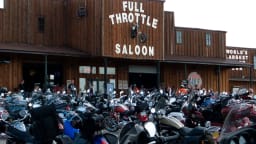
The ultimate justification offered by the mayor and other city officials was that the hordes of bikers were going to come anyway. They noted that Rod Woodruff, owner of the Buffalo Chip campground and concert venue, had announced his intention to be open for a 39th consecutive rally. The campground’s Facebook page had this posting with a message from a Hollywood actor:
“Hey there, Tom Berenger here. Have you heard? Well, my friend Rod Woodruff at the Buffalo Chip let me know that Sturgis 2020, the 80th anniversary, is ON! I don’t know about you, but I’m packin’ her up here. I hope to see ya out there. God bless America. And God bless the Buffalo Chip.”
The Buffalo Chip is the area’s biggest, a biker mecca. It is also just outside the city limits and an incorporated town unto itself. Sturgis could do nothing to regulate it.
“We’re just celebrating good old American freedom,” Woodruff told The Daily Beast on Wednesday.
He said he had unfolded the world’s largest American flag on July 3, so Trump could see it while flying over on the way to the event at nearby Mount Rushmore.
Even though the rally did not officially begin until Friday, bikes had started to arrive mid-week.
“What a release to hear the sound of Harley-Davidson engines in the campground again,” Woodruff said. “Just marvelous.”
He figured the turnout would at least equal—maybe exceed—last year’s. He has had several bands cancel on him in recent weeks as a result of COVID-19 concerns, but others had signed on. And he had additional events such as the Lingerie Fighting Championship.
The producer of the all-woman lingerie event, Sean Donnelly, assured The Daily Beast that the participants had been offered a chance to opt out of the rally. He added that they would be staying at a hotel 30 miles away in Rapid City and would be bused in two hours before the bouts, returning directly to the hotel afterwards. They would have custom-designed masks.
“Not a bad look,” Donnelly said. “Of course, they won’t be fighting in them.”
Few of the quarter-million people expected to attend the rally will likely be doing anything in masks. A shopkeeper friend of Chaplin’s made an attempt at humor on Facebook.
“Welcome rally goers, we’re dying to serve you,” the shopkeeper posted.
“Not funny,” Chaplin replied.

The 2003 Sturgis rally.
Scott Olson/Getty
Chaplin and her husband usually leave town during the rally and decided to depart two days early this year. She will return to a county where there have been only 82 COVID-19 cases, but there is no telling what the rally will leave behind besides piles of garbage by which the city estimates the number of attendees. She has a son and a daughter who teach in the Sturgis schools and grandchildren who attend them.
To add to her worries, Gov. Kristi Noem has declared that all South Dakota families should send their kids back to school without masks.
“We believe that when it comes to children, masks have the potential to do more harm than good,” Noem wrote in a fundraising email.
During an appearance on The Ingraham Angle on Fox News, Noem voiced support for the rally.
“We know we could have these events, get people information, let them protect their health, but still enjoy their way of life and enjoy events like the Sturgis motorcycle rally,” she said.
Michael Fellner and his wife, Carol, will wait out the rally in self-quarantine on their eight acres just outside of town.
“I think this year we are on the road to making a super-spreading event,” she said. “Not just for your state, not just for your region, but for your country. That’s my statement.”
Michael said of the rally, “The sad thing is that you find common sense is not as common as people believe.”
He suggested what deprived Sturgis of that sense.
“I hate to put it that way, but it’s the smell of money.”
Michael noted that one of his daughters and her husband are Broadway actors. The daughter had already taken a break to concentrate on being a mom. The son-in-law lost a starring role when Broadway shut down.
“He’s now selling insurance,” Michael said.
The consolation is that the virus has been brought under control in New York, as it likely could be everywhere if everyone followed the city’s example.
But COVID can just as easily spike anywhere that example is ignored. And the virus might be spreading across the country on motorcycles by the end of next week.
“This is going to be just the start of it,” Linda Chaplin said.
“You really have to look to see someone wearing a mask,” he reported, as though this was a good thing.
And, having come from seemingly everywhere with whatever virus they might happen to carry, they will all mingle and return home with any virus they happen to pick up. Some will have purchased one of the souvenir T-shirts that retired school counselor Linda Chaplin of Sturgis saw a street vendor selling. The front reads:
“Screw COVID-19
I came to Sturgis”

David McNew/Getty
That is far from what the 70-year-old Chaplin imagined when she initially learned of the pandemic.
“One of my first thoughts was, ‘Oh, we won’t have the rally this year,’” she told The Daily Beast.
She allows that she is “not a rally person,” having in the past hopped on a bicycle to negotiate the annual gridlock of Harleys. But she understands the economic importance of the event to the town, having in past years picked up some extra money sewing patches on jackets. She nonetheless did not expect her town to prize livelihoods over lives.
“I was rather aghast that our little town was still planning to go ahead with the rally,” she said.
Chaplin was among the citizens who addressed Mayor Mark Carstensen and the City Council at a June 10 hearing about the rally. Chaplin was not speaking to strangers. She used to change the mayor’s diapers when he was a toddler and childhood friend of her daughter.
“It is my deepest conviction that this is a huge, foolish mistake to make to host the rally this year," Chaplin said at the hearing. “The government of Sturgis needs to care most for its citizens.”
She offered a solution to the rally problem: “Have a bigger one next year.”
Other speakers included ICU nurse Linda Janovy, who said the regional medical facilities are not equipped to handle an outbreak.
“We have freedom, but we also have responsibility,” she said. “You are not going to make everybody happy. Your responsibility is to keep the public safe, as safe as you can.”
Then came Lynn Burke, a nurse at the local VA facility.
“What’s the price of human life?” she asked. “I hear a lot of people saying we’re going to lose money. What about the lives we’re going to lose?”
But several local business people spoke of how dependent they are on the revenue generated by the rally. And there were also folks such as a lifelong Sturgis resident named Bob Davis.
“Freedom, God, and Donald Trump,” he said.
The City Council had never considered whether or not to approve the rally because that had never been a question. There had only been the formality of approving the necessary road closures. The council did so again on June 15 even though a survey showed that 60 percent of Sturgis residents favored canceling this year's rally.
Sturgis officials sought to calm rally opponents by saying the city was seeking to reduce the turnout by curtailing the usual advertising. The official Sturgis website nonetheless listed various exciting events for anyone tempted to attend. There was this:
“JOIN US AUGUST 10TH, 2020 FOR THE 18TH ANNUAL MAYOR’S RIDE!! The City of Sturgis is excited to be hosting the 18th Annual Sturgis Mayor’s Ride during the 80th Annual City of Sturgis Motorcycle Rally! This ride has been a special part of the City of Sturgis Motorcycle Rally; not only for the amazing beauty of the Black Hills but that it brings people together from all over the word [world].”
America’s Biggest Biker Bar Burns Down
STURGIS LEGEND
M.L. Nestel

The ultimate justification offered by the mayor and other city officials was that the hordes of bikers were going to come anyway. They noted that Rod Woodruff, owner of the Buffalo Chip campground and concert venue, had announced his intention to be open for a 39th consecutive rally. The campground’s Facebook page had this posting with a message from a Hollywood actor:
“Hey there, Tom Berenger here. Have you heard? Well, my friend Rod Woodruff at the Buffalo Chip let me know that Sturgis 2020, the 80th anniversary, is ON! I don’t know about you, but I’m packin’ her up here. I hope to see ya out there. God bless America. And God bless the Buffalo Chip.”
The Buffalo Chip is the area’s biggest, a biker mecca. It is also just outside the city limits and an incorporated town unto itself. Sturgis could do nothing to regulate it.
“We’re just celebrating good old American freedom,” Woodruff told The Daily Beast on Wednesday.
He said he had unfolded the world’s largest American flag on July 3, so Trump could see it while flying over on the way to the event at nearby Mount Rushmore.
Even though the rally did not officially begin until Friday, bikes had started to arrive mid-week.
“What a release to hear the sound of Harley-Davidson engines in the campground again,” Woodruff said. “Just marvelous.”
He figured the turnout would at least equal—maybe exceed—last year’s. He has had several bands cancel on him in recent weeks as a result of COVID-19 concerns, but others had signed on. And he had additional events such as the Lingerie Fighting Championship.
The producer of the all-woman lingerie event, Sean Donnelly, assured The Daily Beast that the participants had been offered a chance to opt out of the rally. He added that they would be staying at a hotel 30 miles away in Rapid City and would be bused in two hours before the bouts, returning directly to the hotel afterwards. They would have custom-designed masks.
“Not a bad look,” Donnelly said. “Of course, they won’t be fighting in them.”
Few of the quarter-million people expected to attend the rally will likely be doing anything in masks. A shopkeeper friend of Chaplin’s made an attempt at humor on Facebook.
“Welcome rally goers, we’re dying to serve you,” the shopkeeper posted.
“Not funny,” Chaplin replied.

The 2003 Sturgis rally.
Scott Olson/Getty
Chaplin and her husband usually leave town during the rally and decided to depart two days early this year. She will return to a county where there have been only 82 COVID-19 cases, but there is no telling what the rally will leave behind besides piles of garbage by which the city estimates the number of attendees. She has a son and a daughter who teach in the Sturgis schools and grandchildren who attend them.
To add to her worries, Gov. Kristi Noem has declared that all South Dakota families should send their kids back to school without masks.
“We believe that when it comes to children, masks have the potential to do more harm than good,” Noem wrote in a fundraising email.
During an appearance on The Ingraham Angle on Fox News, Noem voiced support for the rally.
“We know we could have these events, get people information, let them protect their health, but still enjoy their way of life and enjoy events like the Sturgis motorcycle rally,” she said.
Michael Fellner and his wife, Carol, will wait out the rally in self-quarantine on their eight acres just outside of town.
“I think this year we are on the road to making a super-spreading event,” she said. “Not just for your state, not just for your region, but for your country. That’s my statement.”
Michael said of the rally, “The sad thing is that you find common sense is not as common as people believe.”
He suggested what deprived Sturgis of that sense.
“I hate to put it that way, but it’s the smell of money.”
Michael noted that one of his daughters and her husband are Broadway actors. The daughter had already taken a break to concentrate on being a mom. The son-in-law lost a starring role when Broadway shut down.
“He’s now selling insurance,” Michael said.
The consolation is that the virus has been brought under control in New York, as it likely could be everywhere if everyone followed the city’s example.
But COVID can just as easily spike anywhere that example is ignored. And the virus might be spreading across the country on motorcycles by the end of next week.
“This is going to be just the start of it,” Linda Chaplin said.




